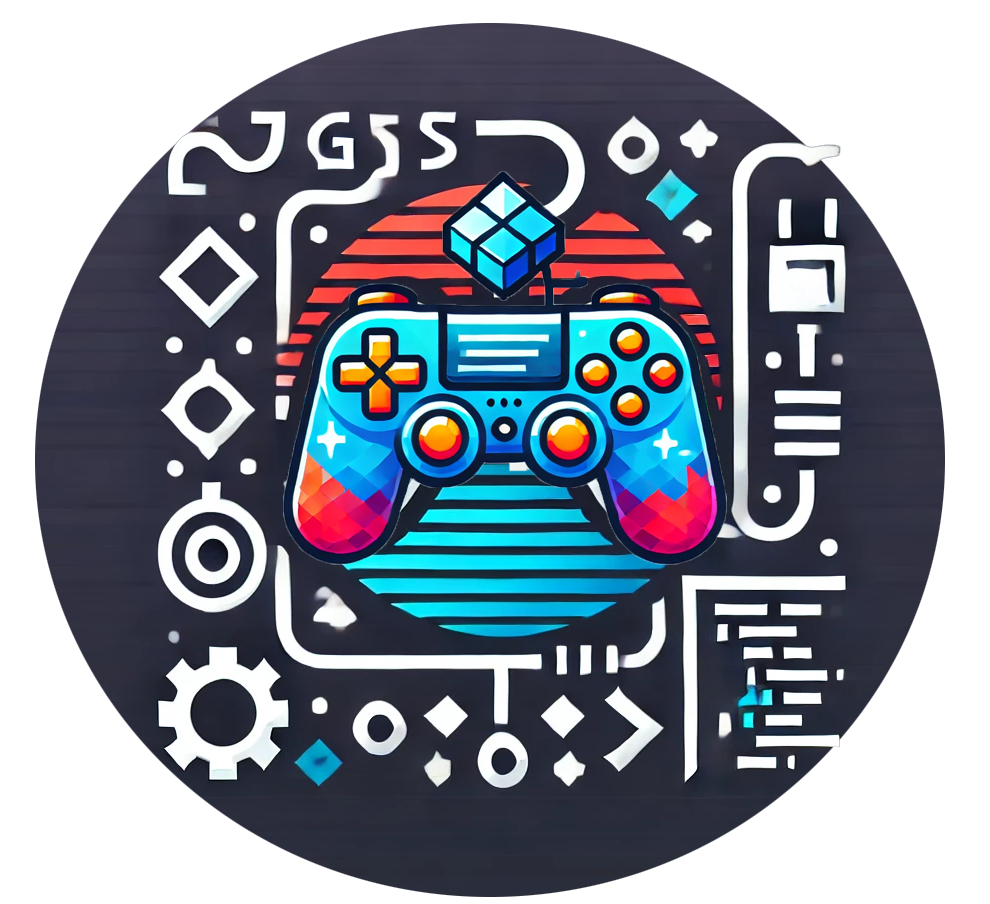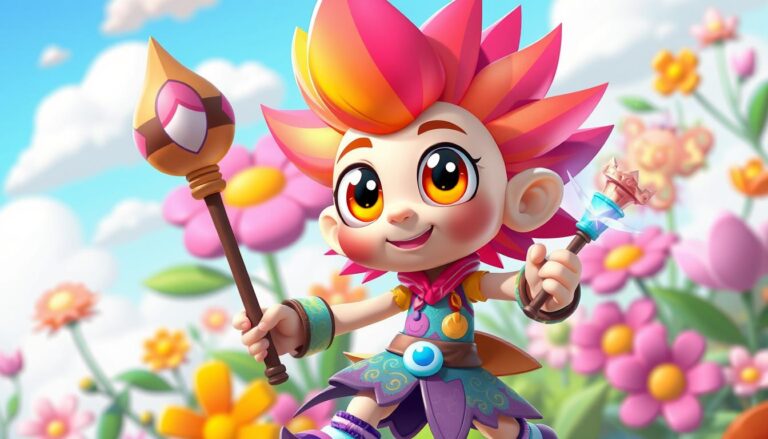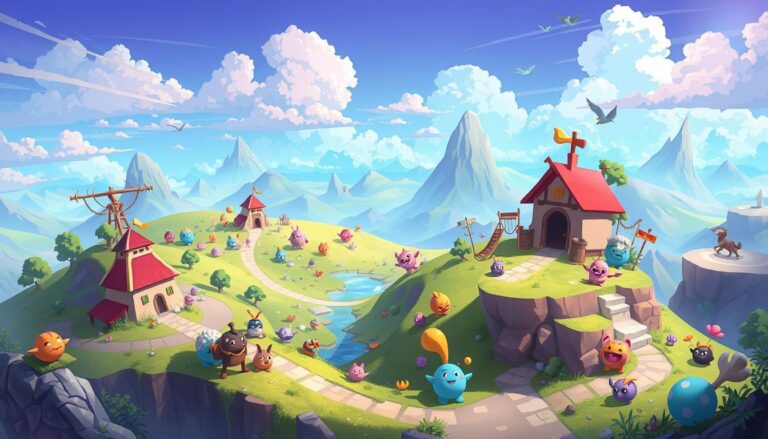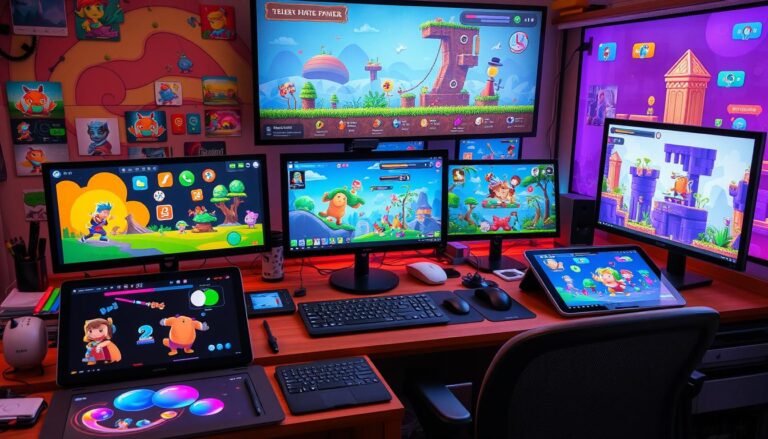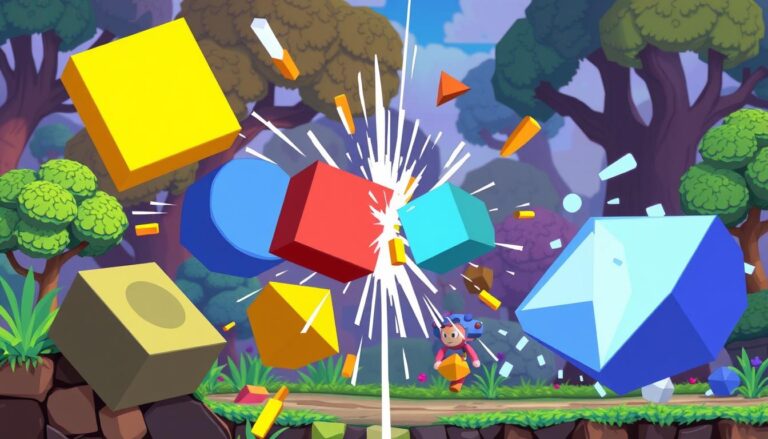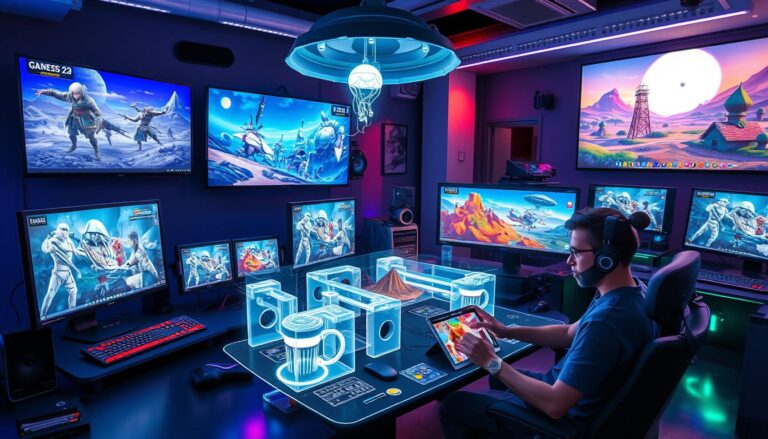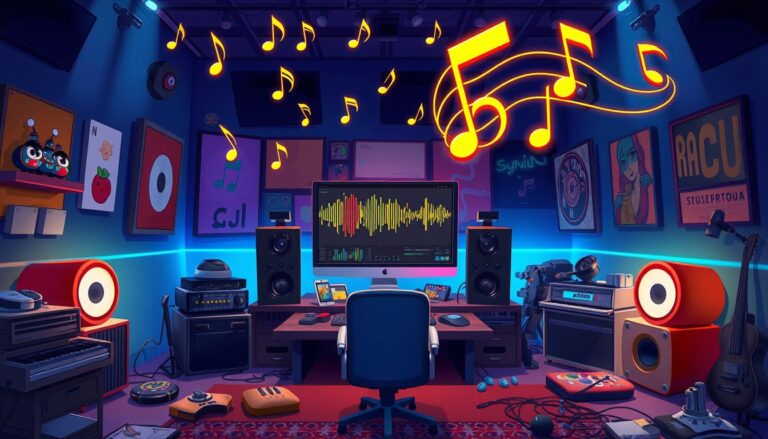How Can You Build a 2D Game Prototype Quickly?
Rapid prototyping is key in game development. It lets you test your game ideas and mechanics quickly. When making a 2D game prototype, focus on a quick, playable experience, not perfect visuals.
Use simple artwork and shapes to make your game idea real. This way, you can get valuable feedback from players.
Unity, Godot, and GameMaker Studio are great for quick 2D game making. They have built-in physics and collision systems. This saves you time and effort in setting up gameplay mechanics.
Start small to make a playable prototype. It should show the game’s core mechanics. This lets you get feedback for improving your game.
The secret to quick 2D game prototyping is making the core gameplay fun. Don’t get caught up in complex visuals or features. Use the right tools and platforms to test your game idea before investing a lot of resources.
Essential Tools and Platforms for Rapid Game Development
Creating a 2D game prototype fast needs the right tools and platforms. Game engines, development environments, and asset tools are key. They help speed up the prototyping and make quick changes.
Game Engines for Fast Prototyping
Top choices for 2D prototyping are Unity, Godot, and GameMaker Studio. They have features like visual editors and physics. This makes development easier. Their scripting languages, like C# and GDScript, help developers quickly create games.
Development Environments and IDEs
Integrated Development Environments (IDEs) are vital for game making. They offer tools for coding and debugging. Visual Studio Code and JetBrains Rider are favorites for their features and engine integration.
Asset Creation Tools
For making 2D sprite animation elements, Aseprite and Piskel are top picks. They have easy-to-use interfaces and great features for pixel art. OpenGameArt also helps with free assets, speeding up the making process.
| Tool/Platform | Description |
|---|---|
| Unity | A comprehensive game engine with a strong focus on 2D game development, featuring a visual editor, built-in physics, and cross-platform capabilities. |
| Godot | An open-source game engine suitable for both 2D and 3D game development, offering a flexible and efficient development environment. |
| GameMaker Studio | A game engine known for its user-friendly drag-and-drop interface and the GameMaker Language (GML) for scripting, making it accessible to developers of all skill levels. |
| Aseprite | A powerful pixel art and sprite animation tool, offering a range of features for creating high-quality 2D assets. |
| OpenGameArt | A repository of free-to-use game assets, including sprites, backgrounds, sound effects, and more, enabling rapid prototyping with placeholder resources. |
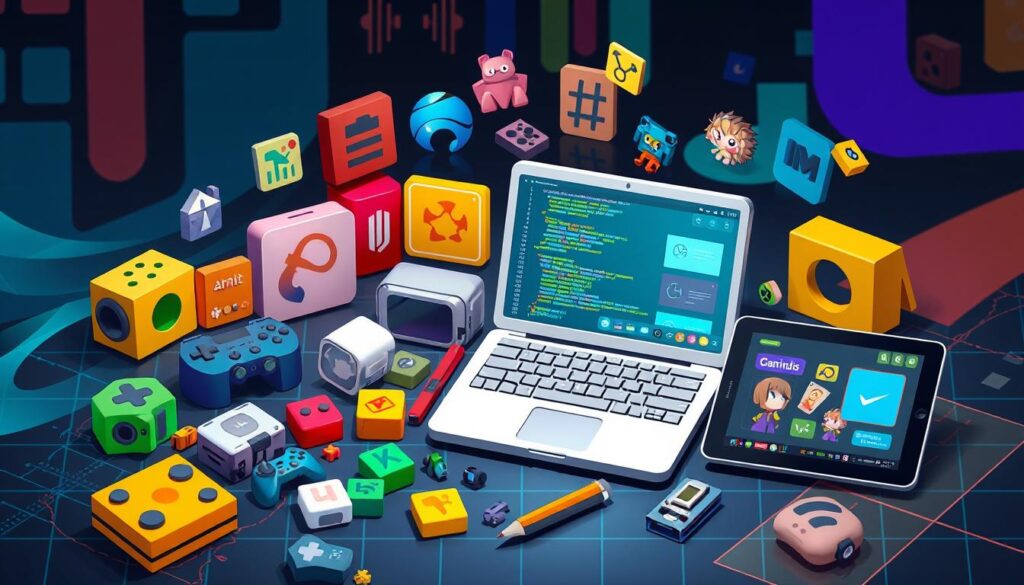
2D Game Development Fundamentals for Prototypes
When making a quick 2D game prototype, start with the core gameplay mechanics. Use simple shapes or basic sprites for characters and objects. This makes it easy to test and improve the game’s basic systems.
Make sure to add essential movement and interaction systems. Create a simple user interface that shows key info like health, score, or level progress. Design a few test levels to show off the game’s main idea and get feedback.
Adding placeholder sound effects and background music can make your prototype feel more real. These audio elements can greatly improve the game’s feel and quality, even with simple assets.
The main goal of a prototype is to test your game idea and get feedback fast. Don’t spend too much time making it perfect at this stage. Instead, use feedback to quickly improve the Level Design, User Interfaces, and Game Audio before starting the full game.
| Key Focus Areas for 2D Game Prototyping | Recommended Approach |
|---|---|
| Core Gameplay Mechanics | Implement with simple shapes or basic sprites |
| User Interface | Create a minimal UI for essential information |
| Level Design | Design a few test levels to showcase the concept |
| Game Audio | Add placeholder sound effects and background music |
| Iteration and Feedback | Quickly iterate based on playtesting insights |
By focusing on these key areas, you can make a great 2D game prototype. It will show off your vision and help you move forward to a successful full game development.
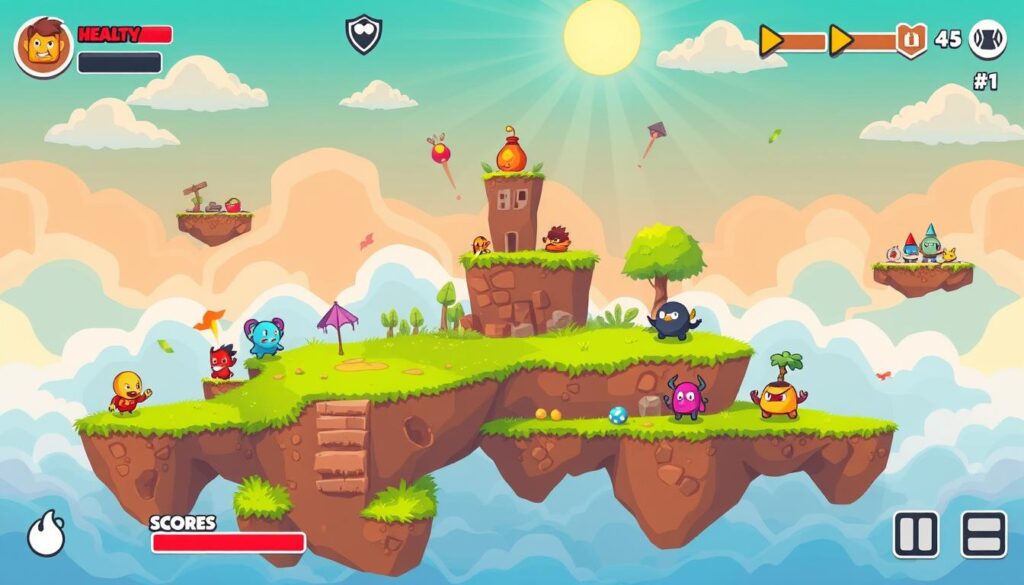
Setting Up Physics and Collision Systems
Creating a 2D game prototype quickly needs a strong base in physics and collision detection. These systems are key for a game world that feels real and interactive. By using the physics engines in game development tools, developers can quickly add basic physics and improve collision detection.
Implementing Basic Physics Components
The first step is to add basic physics like gravity, velocity, and acceleration. These can be added using the physics engines in game development platforms. For example, Unity’s physics system lets developers set properties like mass and drag, making objects behave realistically.
Collision Detection Methods
Collision detection is vital in 2D game physics. It’s about knowing when objects hit each other. The choice between continuous and discrete collision detection affects the game’s feel and performance. Continuous detection is more detailed but slower, while discrete is faster but might miss some hits.
Optimizing Physics for Prototypes
To make a 2D game prototype run well, physics and collision detection need to be optimized. Using simple shapes like boxes or circles for colliders helps. Also, only calculating physics for important objects in the scene boosts performance. Spatial partitioning, like quadtrees, can also make collision detection faster by narrowing down where collisions might happen.
By using built-in physics engines, adding basic physics, choosing the right collision detection, and optimizing, developers can build a solid foundation for their game. This ensures a game world that’s both responsive and believable, capturing the game’s essence.
| Physics Engine | Key Features | Optimization Techniques |
|---|---|---|
| Box2D |
|
|
| Bullet Physics |
|
|
| Physx |
|
|
The choice of physics engine and optimization techniques depends on the game prototype’s needs. Choosing wisely ensures a smooth and engaging game for players.
Streamlining Asset Integration and Visual Elements
In rapid game prototyping, integrating visual assets and creating a unified look are key. Using Pixel Art and Level Design helps developers quickly create engaging games. This way, they can grab their audience’s attention right away.
Using placeholder art is a smart move. It lets developers quickly see how game elements will look. These simple pixel art or vector graphics can be for characters, objects, and settings. It helps them focus on the game’s core without worrying about detailed art early on.
Tile-based systems make creating game worlds faster. By using pre-made tiles, developers can easily change and test different layouts. This ensures their game worlds look good and are well put together.
Animations are vital for making a game feel alive. Basic animations from sprite sheets or skeletal systems add movement. Color-coding also helps, making different game parts stand out. This makes the game easier to understand and more fun to play.
Adding visual feedback for player actions and game events is important. Particle systems can create cool effects like explosions or item pickups. This makes the game world feel more real and engaging.
By using these methods and tools, developers can quickly add visual elements to their prototypes. This creates a game that’s polished and fun, drawing players in from the start.
Conclusion
Rapid prototyping is key to testing game ideas quickly. It helps developers see if the core gameplay works. With the right tools, they can make 2D game prototypes in days or weeks, not months.
2D game development is versatile and easy to get into. It often brings a nostalgic feel. Unity and Godot are great for making 2D games, with tools for assets, levels, and physics.
When prototyping, focus on simplicity and function. Clean visuals and simple mechanics make for a better game. Regular playtesting and talking to players are vital to improve the game and check if it’s on the right track.
